STEWART UOO: THE GOWN AND THE FLEAS
| January 6, 2016 | Post In LEAP 36
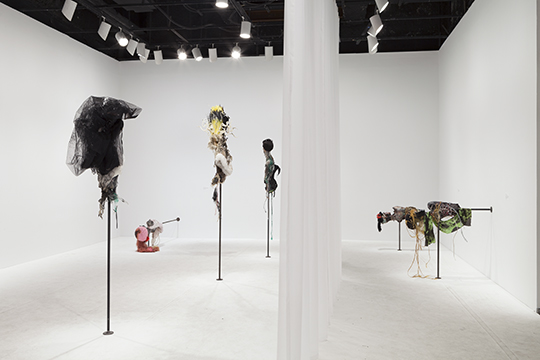
Nearly all media portrayals of Stewart Uoo incorporate one adjective rather prominently: young. Indeed, Uoo, born in California in 1985, took part in a two-person exhibition at the Whitney Museum by the time he was 28, and has shown in Berlin, London, Copenhagen, Gwangju, and Buenos Aires. After studying at the Städelschule in Frankfurt, Uoo settled in Brooklyn and refers to his experiences in the United States frequently, often alluding to fashion, nightlife, the drag scene, video games, pop music, and television shows in his work. Uoo is typical of the post-internet generation, reflected in a number of other descriptions starting with the “post-” prefix: post-apocalyptic, posthuman, post-material, post-medium, post-studio.
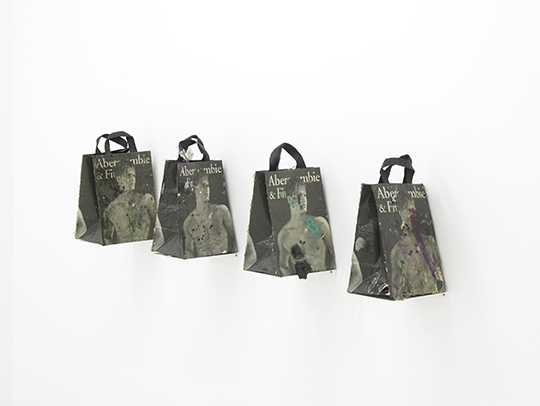
Post-apocalyptic and post-human refer to one of the main subjects in Uoo’s work: temptation and decay and guile and absurdity in a bionic body. As Eileen Chang wrote, “Life is like a dazzling gown, only full of fleas.” This may well be the perfect summary of Uoo’s signature aesthetic: his piece No Sex, No City, exhibited at the Whitney in 2013, showcased four mannequins that were damaged, melted, colored, and amputated to different degrees, and named after the four leads in the hit TV show Sex and the City. Uoo dressed the mannequins in gaudy dollar-store dresses and hats and messy wigs and kitschy jewelry, covered them in acrylic paint and resin, wrapped them in human hair, barbed wire, and computer cables, and unleashed a swarm of flies and maggots over them to create an exhumed punk-zombie look, pushing the envelope on the excessive glamor in vogue for the modern day New Yorker.
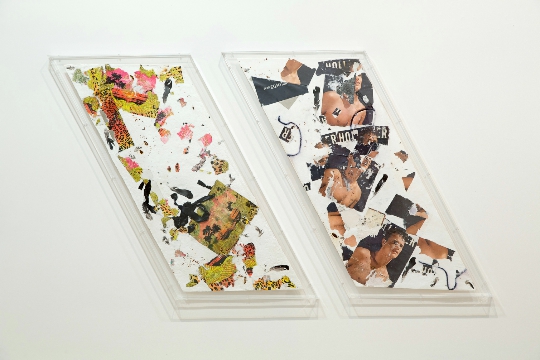
For those who have lived in New York, the brand of neoliberalism and romanticism packaged and popularized by Sex and the City seems far more hypocritical and absurd than Uoo’s stylized horror show. The show’s overwhelming popularity influenced the aesthetics of two generations of women, which is readily apparent from the grotesquely high heels arming women brave enough to take on New York’s evening streets. In this sense, Uoo’s anti-utopian mannequins are a cry of rebellion and vengeance against the stomach-turning commercialization and homogenization that permeates mainstream media.
Stewart Uoo continues American queer artists’ fascination with the body and identity and focus on technology and popular media’s corrosive impact on the fabric of society in a post-identity political environment. Under pressure from social media, video games, anime characters, and fashion advertising, identity needs to be visualized and dematerialized for faster consumption. We can no longer maintain consistent self-awareness, and are placed under constant duress as each new “friending” contributes to the pool of people who must be impressed, lest they choose the nuclear option of “defriending.” Uoo’s post-medium and post-studio monikers refer to his liberal and diverse approaches to selecting and treating raw matter in his work; he translates the ever-shifting human body and accompanying identities into components that can be seen and felt, deconstructing the concept of man into a series of materials. In the series “Security Window Grill,” we see pieces of silicon flesh and organs outfitted with different colors of hair, representing different races, wrapped around stainless steel guard rails: the fragile human body facing a cruel and violent purgatory between inner and outer worlds. Uoo refers to this theme often, as his photographs frequently portray naked models wrapped in wire mesh or power cables. While these pieces are repetitive, their provocative visual language is effective in generating a physiological response.
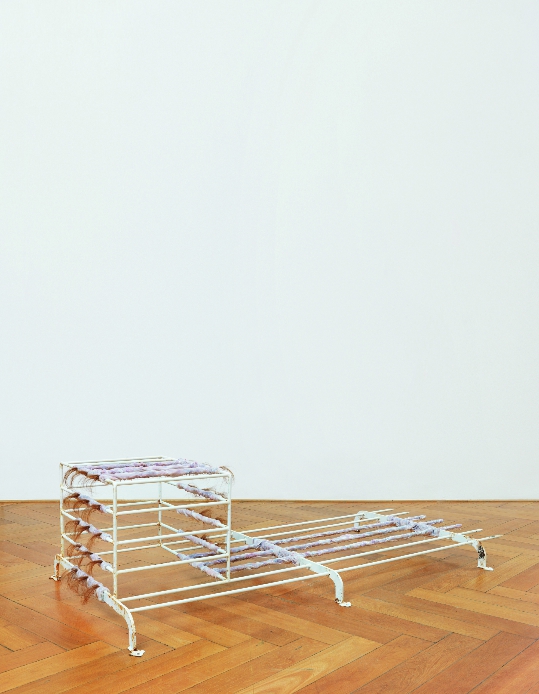
In his solo exhibition “Viva la Juicy” at São Paulo’s Mendes Wood DM earlier this year, Uoo mimicked the papermaking process by cutting paper bags from assorted fashion brands into smaller pieces, mixing them with cotton and denim fibers, and adding unconventional materials such as flies, cockroaches, and pigeon feathers to create sheets of paper via hydrogen bonding. He dried these flat structures by exposing them to the elements on the roof of his studio, allowing them to age under the sun and gather dust. The end result, an example of trash aesthetics, still shows evidence of the glamorous logos and perfectly sculpted bodies of fashion models from the shopping bags; the reminiscence is tense and ironic, as a moment in time is captured in an object, compressing a complex production process into a diorama for audience consumption. Interestingly, Uoo chose shopping bags from brands like Coach, Abercrombie & Fitch, Hollister, and Juicy Couture; their awkward place in the fashion pecking order, between fast fashion and designer labels, corresponds perfectly with the ever-shifting politics and aesthetics of the middle-class consumer. He also uses shopping bags from H&M and Versace collaboration, with the clear message: Those who pay for an H&M-priced collaboration piece are the very same people who wish to never buy another H&M-branded product again.
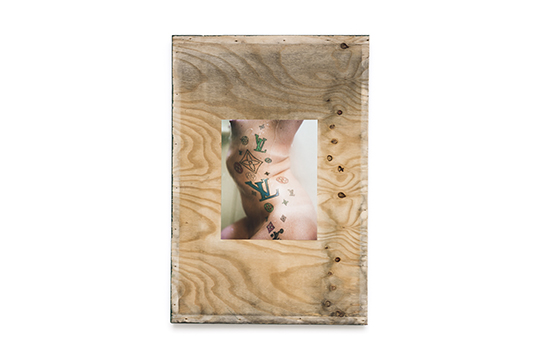
As a gay Asian man who grew up with four older sisters, Uoo must continue to integrate his multiple outsider identities both publicly and privately. His work incorporates his doubt, attraction, aversion, and confusion towards femininity, reminding viewers that differences in exterior appearance ultimately lead to differences in culture and politics. Fashion is an involuntary set of physical rules applied to women and gay men; it may be interpreted as a form of symbolic misogynistic violence. Gay men’s relationship with fashion has always been tenuous, as their position on the fringes of society inspires creativity readily devoured by the mainstream. This tension is clearly palpable in Madonna’s 1990 single “Vogue,” which brought voguing, a symbol of New York’s drag subculture, into the mainstream. Society’s overwhelming receptiveness to RuPaul’s Drag Race has further obscured the queer community’s place between the fringe and mainstream. Uoo’s response to this broader environment is the “Untitled” series of photographs on canvas showing the Louis Vuitton logo painted on a sequence of nude transsexual models. Like any young artist, Uoo must confront the same question: following a series of sharp and successful deconstructions, what can be rebuilt? (Translated by Frank Qian)

